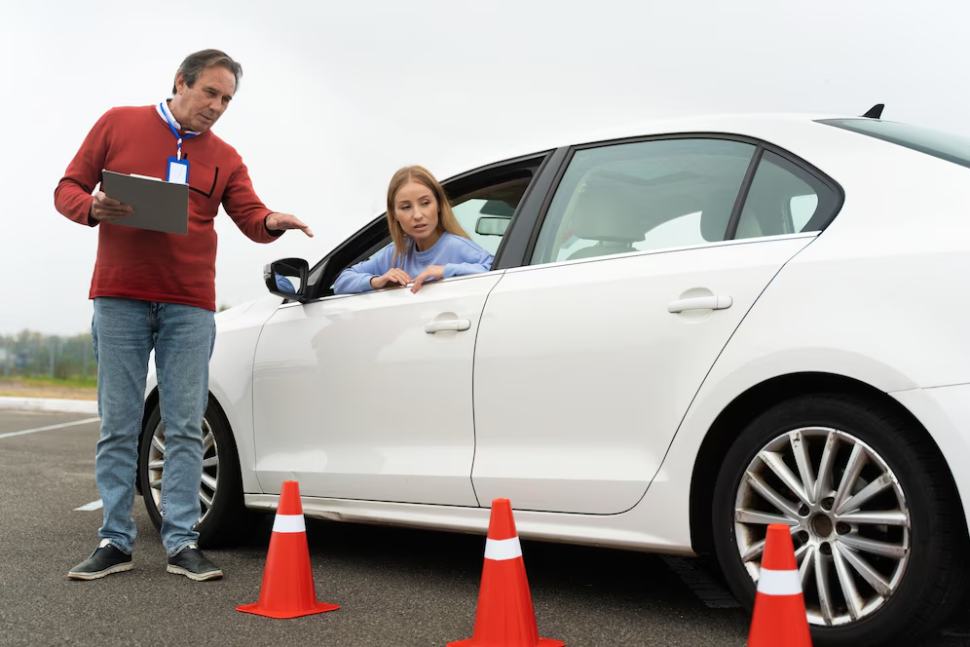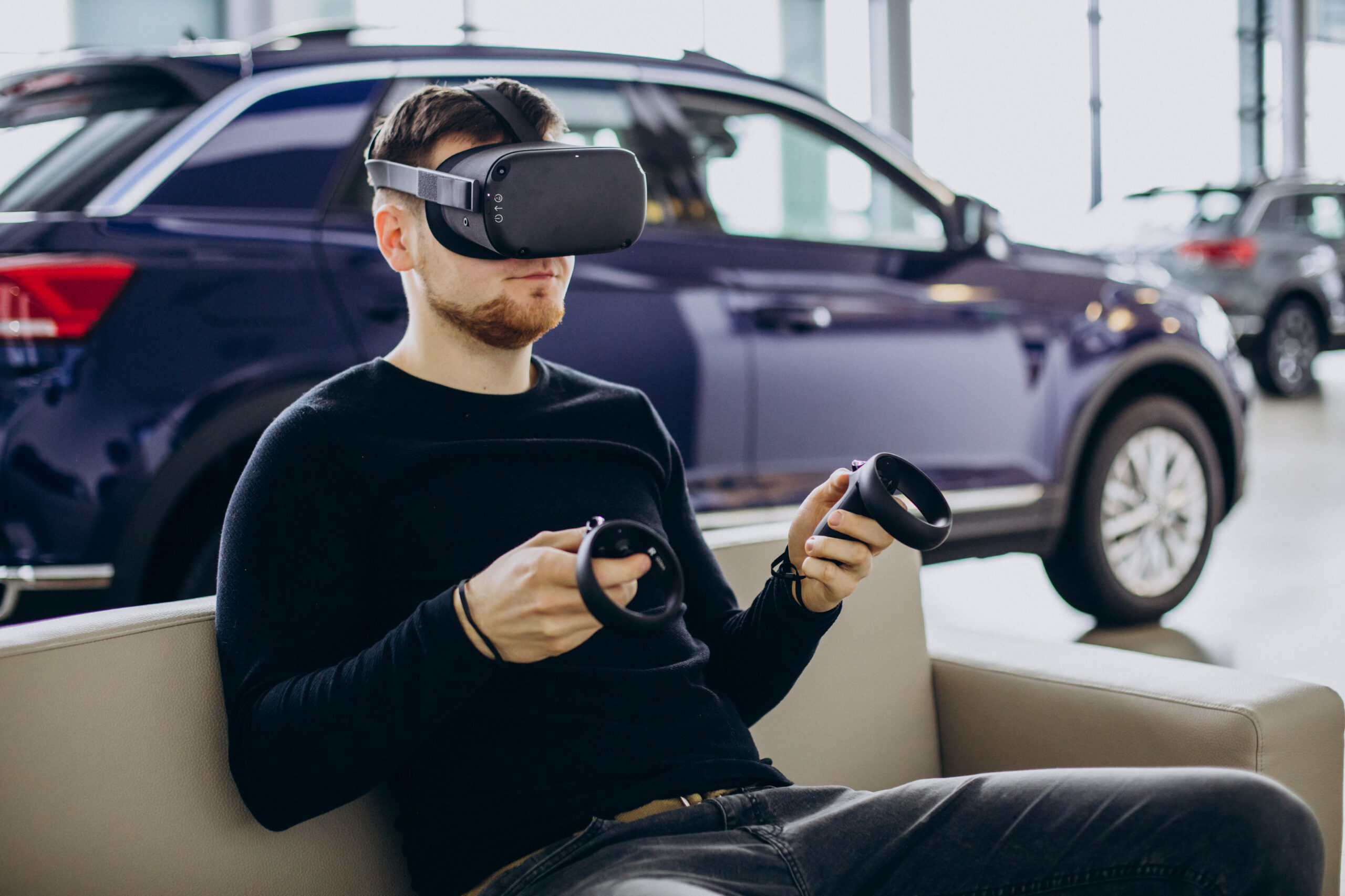
How AR is Enhancing the Driving Experience
Augmented reality (AR) is making big changes in automotive technology. This new technology is changing how we use vehicles. It is also transforming the driving experience. From enhancing safety to providing immersive navigation, AR is proving to be a game-changer in the automotive industry. In this blog, we explore how augmented reality improves the driving experience. We look at its uses, benefits, challenges, and what the future holds.
The Importance of Augmented Reality in Cars
Augmented reality in cars is a game changer. It adds digital information to the real world. This gives drivers a more informed and interactive experience. AR enhances the real world by adding useful data, unlike virtual reality, which puts users in a fully digital space. This makes AR especially helpful when driving.
Enhanced Safety
Safety is paramount in driving, and AR contributes significantly to this aspect. AR gives drivers real-time data like speed, navigation, and hazard alerts on the windscreen. This helps keep their eyes on the road. This heads-up display (HUD) approach minimises distractions and enhances situational awareness. Drivers see alerts for pedestrians, lane departures, and sudden obstacles. This helps prevent accidents and improves reaction time.
Improved Navigation
Traditional GPS systems, while useful, often require drivers to glance away from the road. AR driving displays show navigation instructions right on the windscreen or a special display you can see easily. Arrows may appear on the road ahead to indicate turns, while landmarks and street names are clearly labelled. This smooth mix of direction and route info makes navigation easier, quicker, and less distracting.
Enhanced Driving Experience
AR enriches the driving experience by providing contextual information about the surroundings. It can show points of interest, like restaurants and petrol stations. It also displays real-time traffic and gives weather updates. These features make driving more enjoyable, efficient, and informed. They help drivers make better choices on the road.
Key Benefits of AR Driving Displays
The integration of AR in vehicles offers numerous benefits, making it a crucial component of modern automotive design. Let’s explore some key advantages:
Real-time Information
One of the most significant benefits of AR driving displays is the provision of real-time information. AR gives drivers real-time info on traffic updates, speed limits, road hazards, and nearby amenities. This way, they can stay focused on the road.
Increased Driver Focus
AR places key information right in front of the driver. This cuts down on the need to look away at standard dashboard displays. Focusing more on the road boosts safety. It lowers the chances of accidents from distractions, especially when driving in complex or fast situations.
Customisable Displays
AR technology allows for customisable displays tailored to individual driver preferences. This personalization helps drivers get the most important information. This includes details like fuel levels, tire pressure, and real-time diagnostics. The ability to customise these elements improves driver satisfaction and vehicle interaction.
Better Situational Awareness
AR systems can also support situational awareness by overlaying critical visual cues on live camera feeds. For instance, during poor weather or night driving, AR can highlight lane markers or detect nearby vehicles. ADAS with AR can help drivers by offering lane-keeping assistance, collision warnings, and adaptive cruise control. It provides visual support for a safer driving experience.
Practical Applications of Augmented Reality in Automotive Design
The practical applications of AR in cars go beyond simple navigation aids. Here’s how AR is being used today and what to expect in the near future:
Heads-Up Displays (HUDs)
One of the most widely adopted AR applications in cars is the heads-up display. HUDs show key driving info like speed, navigation steps, and warning signals right on the windscreen or a clear display panel. Modern HUDs use AR to align digital data with real-world locations, enhancing visual guidance.
AR Windshields
AR windshields take HUDs a step further by turning the entire front glass into an interactive display. These windshields can spot road objects, mark lanes, and show pedestrian crossings. They also alert drivers to blind spots and signs of fatigue. Major manufacturers like BMW, Mercedes-Benz, and Hyundai are actively investing in this technology.
Smart Mirrors and Rear Displays
AR can enhance rear-view and side mirrors. It turns them into smart displays. These displays offer extended views, object detection, and blind spot alerts. These mirrors can show overlays of approaching vehicles or merging traffic. Some systems also incorporate rear-facing cameras for better visibility in tight manoeuvres.
Parking Assistance
AR improves parking by giving a 360-degree view of your vehicle. It shows path indicators, warns about obstacles, and offers visual guides for parallel or reverse parking. This reduces stress and increases precision, especially in urban areas with limited space.

Driver Training and Simulation
AR is increasingly being used in driver training through augmented simulators. These platforms let learners practice in virtual settings that include real-world road rules and hazards. This approach provides a safe and cost-effective way to improve driving skills and awareness.
Expert Tips for Maximising the Benefits of Automotive AR Applications
AR in vehicles offers clear benefits, but to maximise them, we need to focus on details. Regular maintenance and careful use are also important. Here are some expert tips for drivers and manufacturers:
Regular Updates
Like any digital system, AR interfaces require regular software updates. These updates may include new features, safety enhancements, bug fixes, or security patches. Ensure that your vehicle’s AR system is always up to date to benefit from the latest innovations and avoid compatibility issues.
User Training and Familiarisation
AR systems, especially those with advanced features, may have a learning curve. Drivers should spend time familiarising themselves with the system’s layout, settings, and functionalities. Manufacturers should provide comprehensive guides, in-car tutorials, and demo modes to support this.
Maintenance of Sensors and Cameras
The performance of AR systems depends heavily on the accuracy of the input data from sensors, cameras, and LiDAR systems. Keeping these components clean and well-maintained ensures reliable operation. Dirty or misaligned sensors can compromise the accuracy of displayed information.
Privacy and Security Awareness
AR systems collect and process a lot of data. This includes location details and vehicle performance metrics. Users should be aware of how their data is used and stored. In the connected vehicle world, picking systems with solid encryption and privacy policies is key.
Common Mistakes to Avoid in Implementing AR Driving Displays
While the benefits are clear, there are also some common pitfalls to be mindful of when using or integrating AR in cars:
Over-Reliance on Technology
AR offers great driving support, but it shouldn’t replace focused and responsible driving. Drivers who rely too heavily on digital systems may become complacent or delayed in responding to road hazards.
Ignoring Calibration
Misaligned visuals from poorly calibrated AR displays can confuse or distract drivers. Calibration should be routinely checked, particularly after software updates or hardware changes.
Poor Interface Design
An overly cluttered or complicated AR interface can do more harm than good. Effective AR design should prioritise simplicity, legibility, and minimal cognitive load. Manufacturers must test these interfaces extensively under different driving conditions.
Not Considering Driver Demographics
AR systems should accommodate a wide range of users, including those who may not be tech-savvy. User interfaces should be easy to use. They need adjustable settings for brightness, layout, and complexity to match driver preferences and needs.
The Future of Augmented Reality in Cars
As technology continues to advance, the future of AR in the automotive industry looks incredibly promising. Here are some trends and developments shaping the next generation of AR driving experiences:
Integration with Autonomous Vehicles
AR is expected to play a pivotal role in the development and acceptance of autonomous vehicles. In these vehicles, AR can show passengers real-time updates. This includes the car’s actions, decision-making, and the environment around them. This transparency can help build trust in autonomous systems.

V2X Communication and Smart Cities
AR displays might one day work with vehicle-to-everything (V2X) systems. This will let cars get real-time updates from traffic lights, road infrastructure, and other vehicles. This could lead to better navigation, safer intersections, and improved traffic flow in smart cities.
Enhanced AR for Passengers
In the future, AR may extend beyond the driver to include passengers. Rear-seat passengers could use AR windows or displays. They can interact with their surroundings, access entertainment, or get travel info. This changes the car interior into an immersive space.
Wearable AR Integration
AR glasses or headsets could give drivers personal driving data. This helps them stay aware of their surroundings. These wearables could help delivery drivers, emergency responders, and fleet managers. They need better data visibility.
Sustainability and Efficiency
AR can support sustainability in several ways. It can promote fuel-efficient driving habits. It can also alert users to eco-friendly routes. Plus, it optimises battery use in electric vehicles. AR gives drivers real-time feedback. This helps them adopt greener driving habits and supports environmental goals.
Conclusion: Augmented Reality is Driving the Future
In conclusion, augmented reality is changing how we drive. It gives real-time information, boosts safety, and makes the journey more immersive and interactive. As technology continues to advance, the integration of AR in cars is set to become even more sophisticated, paving the way for a new era of driving.
Whether you’re a tech enthusiast or a cautious adopter, the impact of AR on the automotive industry is undeniable. Looking ahead, embracing these innovations will improve our driving experience. They will also change how we connect with the world.
AR is changing driving. It brings better safety features, cool navigation tools, and high-tech windshields. Manufacturers, developers, and drivers are working together. This teamwork opens up endless possibilities for AR driving displays and automotive AR applications. The road ahead is clear — and augmented.